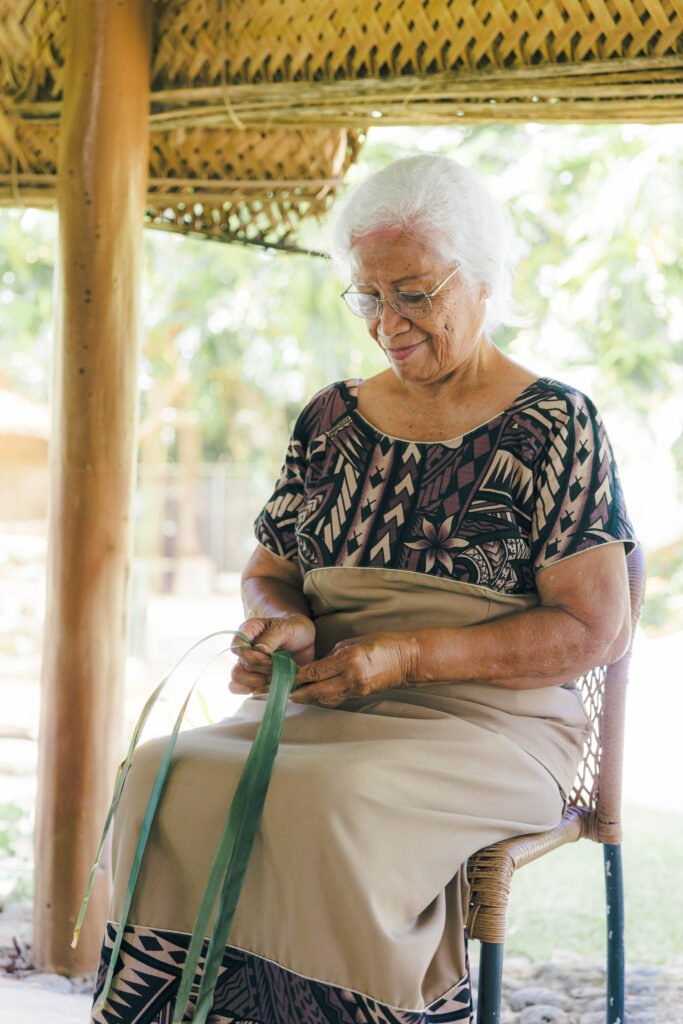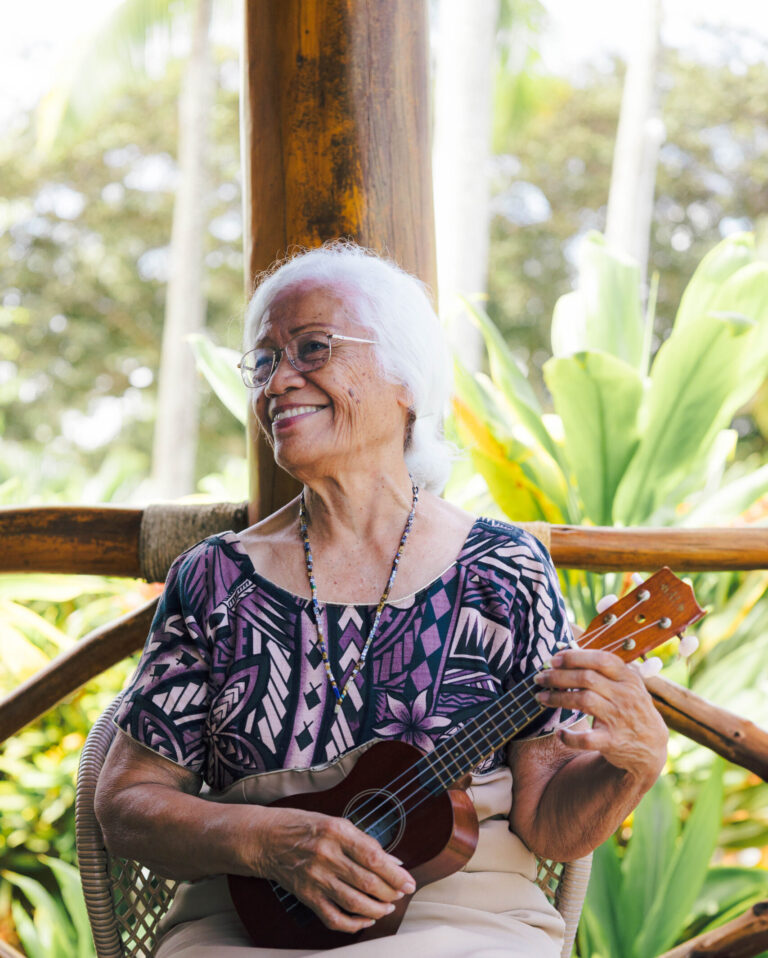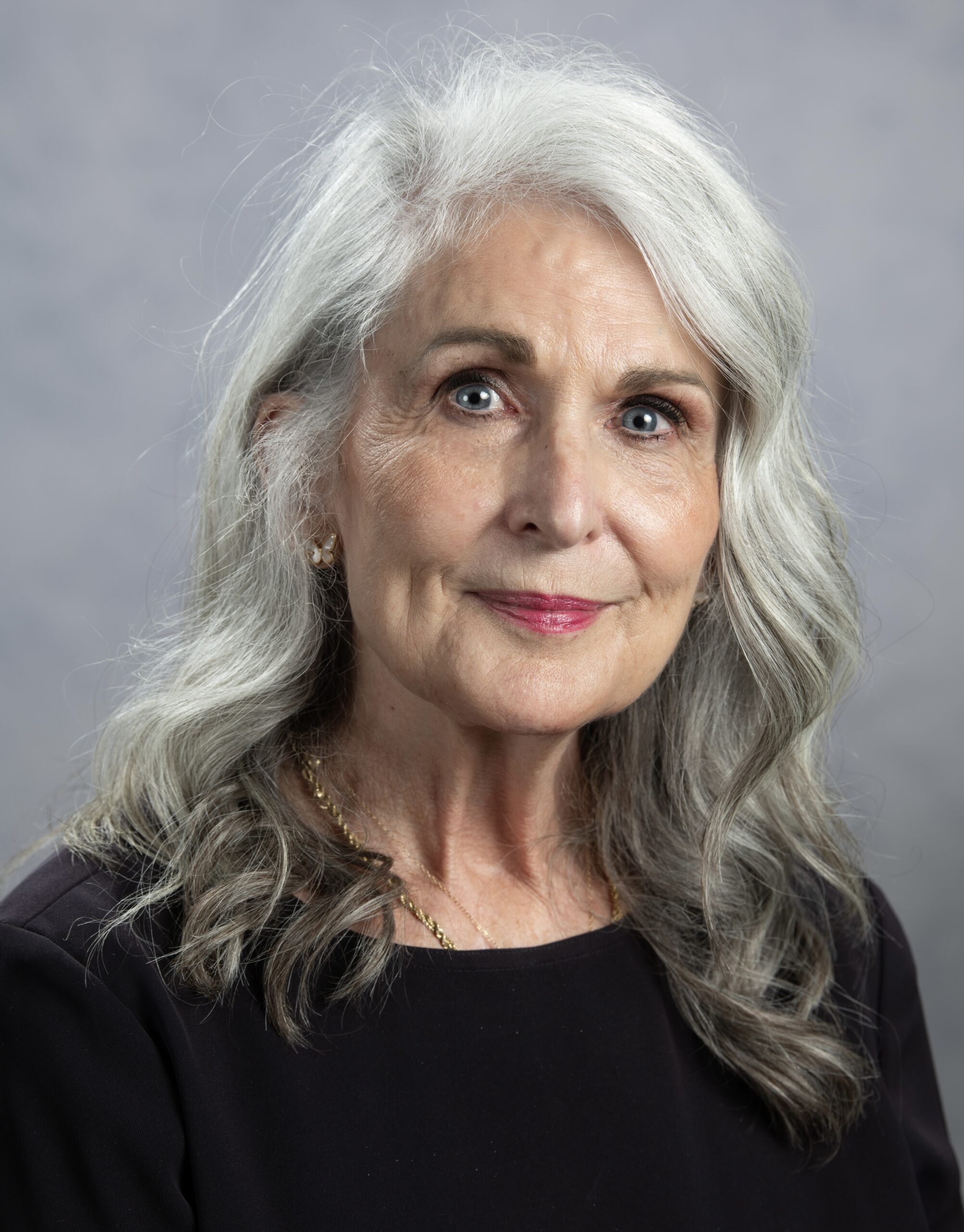
Tauamatu (Matu) Marrero makes the thirty-minute drive to Lehua Elementary School in Pearl City two days a week to teach Hawaiian studies – a position she held for over two decades.
“Even though I officially retired in 2019,” she says with a smile, “they still ask me to come. I don’t know how to say no. I love those kids. I miss them when I’m not there.” Born in Samoa on January 30, 1946, Matu was named after her grandmother. She grew up in a large family—one of fourteen siblings, the second oldest. Her early life was shaped by great loss.
By age three, she had experienced the passing of her baby brother, her beloved papa… “I was so close to my papa,” she says quietly. “He would come home from work and mother, and I would sleep next to him every night.” She remembers the deep sadness of those years. “I used to tell my religious Grandma, ‘You’re lying—there’s no such thing as God or Jesus.’ I was so angry, I hated everything.”
But Grandma never stopped praying. And eventually, Matu found faith again. “When my brother and I moved in with my Aunt Helen and Uncle Sam Atoa, the missionaries came to teach us. I prayed and asked Heavenly Father to help me know if the Gospel was true. And when they laid their hands on my head after my baptism, I felt a warmth from the top of my head to the tips of my toes. That’s how I knew. I knew God was real.”
After graduating from high school in Apia in 1965, Matu came to Hawaii to attend the Church College of Hawaii on scholarship (now BYU–Hawaii). She worked at the Polynesian Cultural Center as a dancer in the Samoan village responsible for making her own costumes, performing in the canoe pageant and evening shows while attending school. “Yes, we got paid,” she laughs, “but it was only good for ice cream and French fries. We were just trying to get by.” Matu recalls long days of dancing, school, work, and more work. After her evening performances, she’d clean classrooms with a group of fellow students—many of them returned missionaries from Samoa. “The men did the hard work—cleaned the bathrooms, mopped. We just dusted and cleaned the boards. They were so good to us. We’d buy them ice cream to say thank you.”
“By the time we got home and finished it was about 11:00 and we had tests! “All the students had lots of late hours burning the midnight oil. Matu had learned to dance the Taualuga —a traditional Samoan dance once reserved for a chief’s daughter. “Only a few of us were selected to learn it back then. Now everyone dances it, but we had to be chosen.” She speaks of the dance with reverence, the way it crowns a celebration—much like how her own life has come full circle.
She met her husband, Logovi’i Savaiinaea, a fire knife dancer, while working and studying. “We were just friends at first. He was Samoan too, and I told myself it would be easier to stay within the culture.” They got married in 1970 and had a son, but times were hard. Both were in school part-time, juggling work and raising a child. They began to attend school part-time. When her husband decided to work in Japan as a way to support the family, Matu stayed in Hawaii with their baby. “I told him, ‘How am I going to do this alone? School, work, a baby?’ He was a good man trying to find a way to survive and said it was better money. Matu was in danger of losing her green card and scholarship and barely hanging on with all the responsibilities.
So, I called my Uncle Sam—the one who had brought me and my brother from Samoa years earlier—and told him I needed to go home. Uncle Sam reasoned with her and said, “that’s not the plan, Matu.” He told her it would be better for her to stay and finish school. He took the baby back to Samoa to be with her mother, allowing her to return to school full-time. “It broke my heart,” she says, “but it was the only way. I finished in a year and a half, and he (her son) came to my graduation—he was about two and a half years old. I held him, and I knew everything I had gone through was worth it.”
Following graduation, Matu returned to Samoa to teach, fulfilling her promise to give back.
“That was the policy: get your education, return home, serve your people. And 99% of us did just that.” She taught sixth grade for five years, later forming a dance group that performed at local hotels. “We made our own costumes from leaves, trees—whatever we had. The older women in Lā‘ie and Samoa taught us where to find materials, how to sew and string flowers into leis.”
Eventually, she found her way back to Lā‘ie. She remarried—a Puerto Rican man she had first known as a friend. “He passed away in 2022. We had three children to raise — my son from my first marriage and two children together” Her voice is steady, but full of emotion. “I still visit his grave, bring flowers, and have a conversation with him.”

Today, at seventy-nine, she plays and teaches the ukulele, works at the Samoan island village the PCC, teaches Hawaiian studies, and continues to be a bright light in the lives of her students. “I laughed and danced with friends, had fun, and now I’m still teaching and playing music. I’m not just lucky, I worked hard through the pain. It’s full circle coming back here. This is home.”

Your comment has been submitted for administrator approval.
Your comment was not saved. Please try again.
No comments yet.